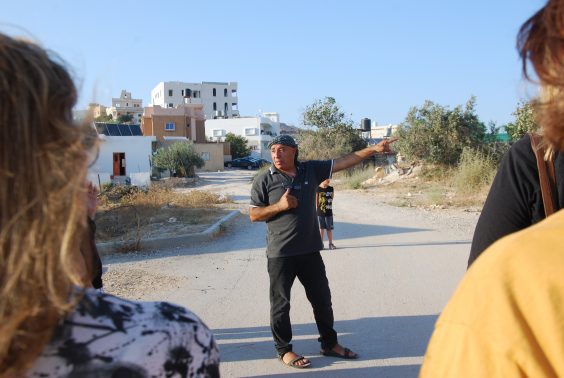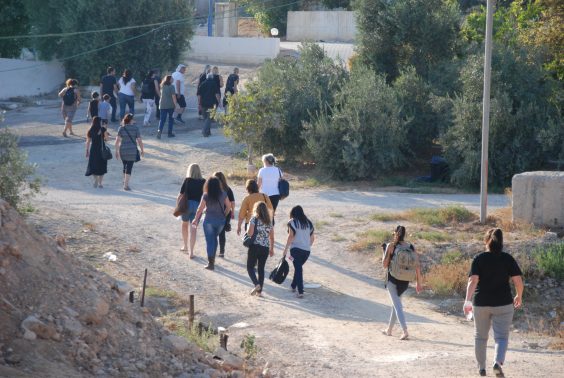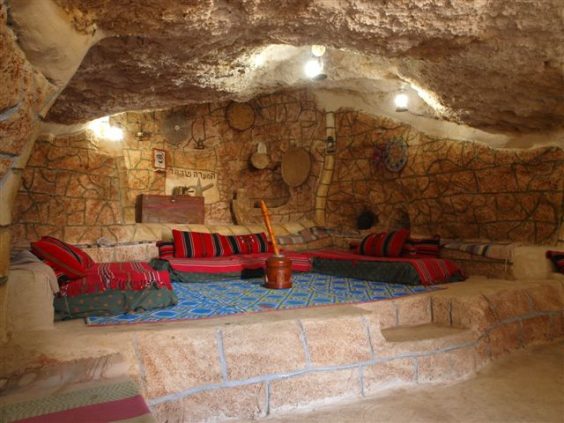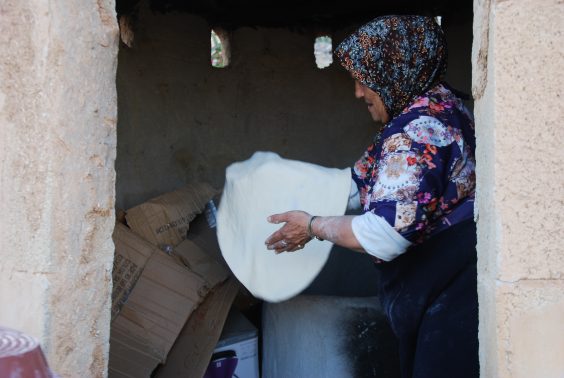Israel’s Agriculture Ministry promotes tourism in the village of Drijat, a remote locale unconnected to the national power grid
[Drijat, Israel]—In Israel’s Negev desert, past long winding roads and hilly sunburnt landscapes, lies the picturesque village of Drijat. Located roughly 30 miles west of the Dead Sea, Drijat is southern Israel’s only Fellahi town. The Fellahin are Arab farmers and agricultural laborers originating from the Middle East and North Africa.
With its fascinating history and unique offerings, the village is quickly becoming a tourist destination for many Israeli and international travelers.
“Drijat is situated over an ancient Roman road built by the emperor Diocletian in the 3rd century CE,” Jaber Abu Hammad, whose ancestors established the village in the 19th century, explained to The Media Line. “It is located over some of these ancient steps and is also part of what is known as the Way of the Patriarchs—the route our biblical forefather Abraham took millennia ago.”
A decade ago, Abu Hammad went through the strenuous Israeli tour guide certification program in order to establish his own hospitality business in the village. Today, he guides thousands of tourists through Drijat each year.

Jaber Abu Hammad, whose ancestors helped establish Drijat, goes over the history of the village with tourists. (Jinitzail Hernandez)
“The course was very difficult. You basically have to learn the history of this country going back 5,000 years, including archaeology, botany and everything else you can think of,” he elaborated, noting the certification process was partially subsidized by the government at the time.
More than 1,000 Fellahin currently reside in Drijat. To help stimulate economic growth, Israel’s Ministry of Agriculture and Rural Development and the Negev Development Authority are promoting tourism in the Negev, with a focus on peripheral communities like the Fellahin and the Bedouin, with many of the latter residing in unofficial outposts and villages throughout the desert. Among the services the ministry provides as part of this initiative are tour guide courses, hospitality classes, culinary workshops, and lessons in social media marketing.
Last week, dozens of tourists drove to the desert town for an evening excursion, at a cost of $25 per person. Visitors followed Abu Hammad, who spoke Hebrew fluently, through the narrow streets of the village as several children peaked out the windows and through doorways to catch a glimpse of the passing strangers. Two children, bolder than the rest, drove by the group in a mini luxury toy car, smiling and laughing as tourists eagerly took snapshots.

A tour group walks through Drijat. (Jinitzail Hernandez)
The tour guide led everyone up to one of Drijat’s most interesting attractions: a cave dwelling where visitors can spend the night. Up until a few decades ago, the Fellahi residents lived in caverns carved into solid rock on the hillside. According to Abu Hammad, his father hewed the three-room cave over several years in the late 19th century where he, his wife, and seven daughters, lived inside one of the rooms, along with a camel, some sheep and cows. In the 1960s, however, the traditional Fellahi cave-dwelling way of life became a thing of the past and the family relocated to a modern home.
“Today, when I look at those caves, I can’t understand how people used to live there with all their livestock,” Abu Hammad wondered out loud. “Life has changed so much that neither I nor my son would be able to live like that.”

A look inside the cave at Drijat where Abu Hammad’s family used to live. (Drijat website)
The tour in Drijat included a delicious traditional Arab feast, featuring maqluba—a Levantine upside down rice and vegetable dish—hummus, and stuffed vine leaves, as well as spiced homemade tea and sweet baklava.
At the end of the night, the tour group was invited to stargaze using professional telescopes specially brought in for the occasion. The vast majority of the Israeli tourists present had never stepped foot in the village before and spoke of the experience fondly.
“The tour was really nice and I appreciate all of Jaber’s hard work and what he’s trying to do for the village,” Joanne Morag, an Israeli resident on last week’s tour, told The Media Line.
Unlike many of the nearby Bedouin towns, Drijat has moved past land disputes with the authorities and was recently recognized by the Israeli government. Still, one major obstacle is holding it back from blossoming into a modern tourist beacon.
“There is no electricity at all in Drijat and this is one of the things really slowing tourism down,” Abu Hammad revealed to The Media Line. “It’s a very big obstacle stopping us from moving forward. At the moment, the village relies on solar panels, which we purchased ourselves, but it doesn’t solve the issue entirely.”
Like many of the neighboring Bedouin villages, the Fellahin have struggled to modernize their town and develop commercially due to a lack of basic infrastructure. However, while many Bedouin villages lack even water and proper sanitation services, and have exceedingly high rates of unemployment—upwards of 50%—the same cannot be said for Drijat, where most residents are well-educated and attend or have attended prestigious universities in Israel and abroad. Several of the communal buildings are solar-powered as well, such as the mosque at the center of the village.
“The level of education in this village is quite high; the unemployment rate is nearly 0%,” Abu Hammad affirmed. “Everyone here works, but most work outside the village because we are still not connected to the national power grid.”

A woman in Drijat prepares fresh tabun bread. (Jinitzail Hernandez)
Yarona Ben Shalom Richardson, the Bedouin Tourism Program Manager at the Ministry of Agriculture and the Negev Development Authority, explained that the issue of power is due to a combination of politics, bureaucracy, and a need for affected communities in the Negev to band together in lobbying the Israeli government.
“Drijat is a recognized village but it still doesn’t have electricity,” she said to The Media Line. “They don’t have planning permits.
“Drijat residents have a lot of issues with that and that’s something the Israeli government has to start addressing because on the one hand they promote tourism, but on the other hand they don’t promote other aspects which would help tourism really develop, like electricity and basic infrastructure,” she added.
Still, despite such hurdles, many in the Negev remain optimistic about the future of the region.
“Tourism is a great way of integrating [these groups] into Israeli society and bringing them economic opportunities,” Ben Shalom Richardson said, adding that the ministry hopes to extend its current tourism program to attract non-Hebrew speakers in the future. “It’s a really beautiful way to promote a shared society, in which people can come and get to know other people.
“When I started three years ago, we had very few people who were entrepreneurs in the tourism industry,” she recounted. “For the benefit of the Negev, for my children here and for the entire area, it is right to take this marginalized community and strengthen it by giving it the quality of life it deserves.”